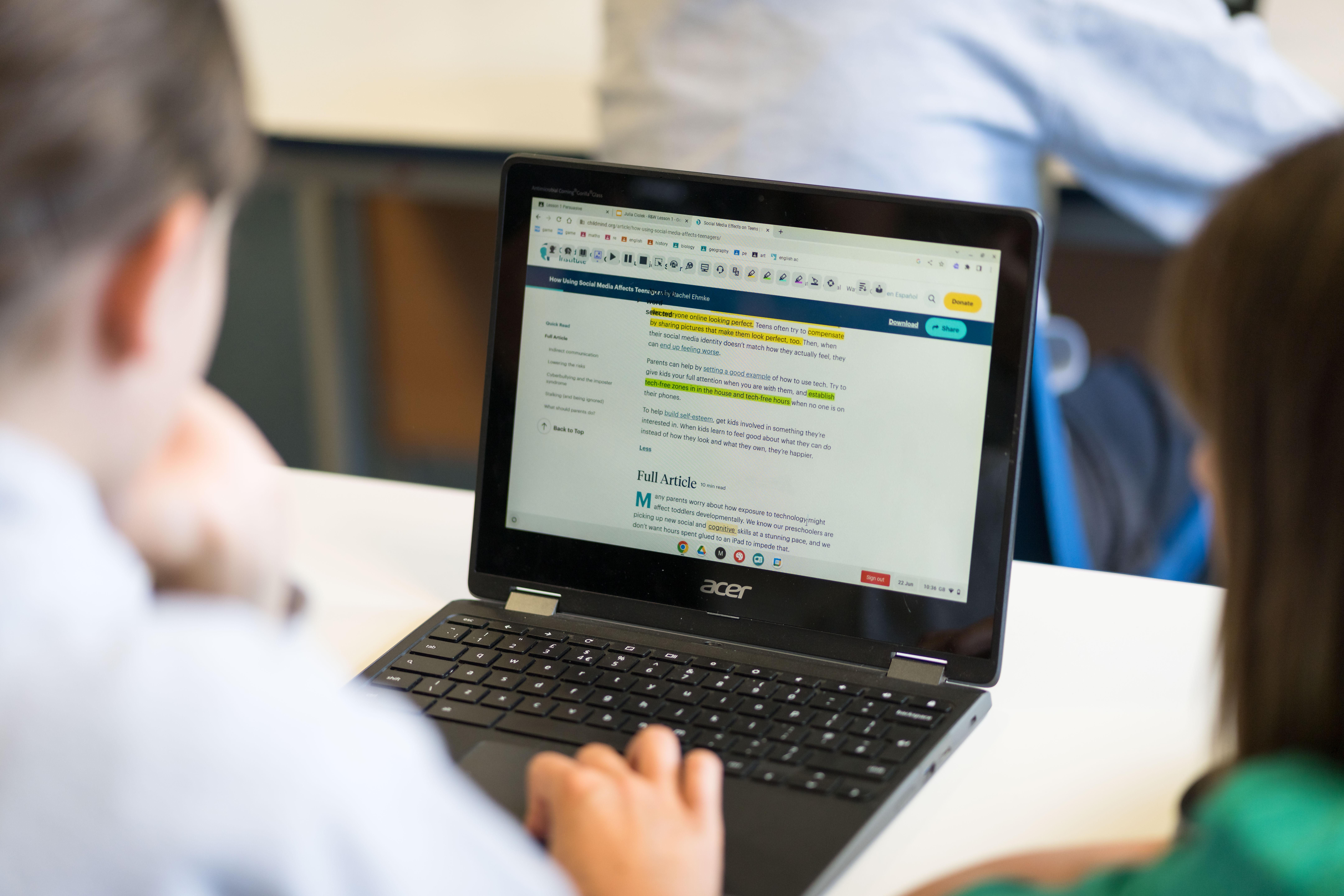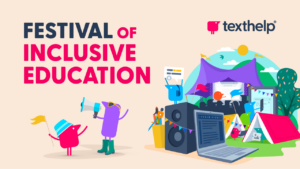Tools and practices that may be necessary to support students with specific learning needs can also have wider benefits for all students. By taking a whole-school approach to inclusive education, we can maximise learning opportunities for all.
Inclusive tools and teaching practices are essential for students with specific learning needs. They remove access barriers, support independent learning and increase our ability to focus on a task.
But are we missing a trick by not integrating inclusive tools and practices into all our teaching?
When we take an inclusive approach to teaching and learning, all students benefit. In other words, what’s necessary for some is useful for all.
Let’s take a look at the numbers…
Government statistics show that 89% of students with a disability in Australia attend mainstream schools. That’s 380,000 students in classrooms around the country, or 10% of all students in primary and secondary education.
When we’re designing our teaching and learning practices, we need to recognise that this 10% is part of the fabric of our schools. Many of these students will have specific learning difficulties (SLDs) which make them eligible for learning support.
But we all know this isn’t the full picture. There are many more students who are not eligible for learning support, but who are struggling nonetheless. Recent NAPLAN data shows that many students are falling below the minimum standards expected in literacy and numeracy. Could we address this problem by broadening access to learning support tools?
Inclusive design helps everyone
In modern buildings, you’re likely to see a ramp or lift alongside stairs. This enables wheelchair users to access the building like anyone else. However, that same ramp or lift can also be used by someone with limited mobility, a person with a pushchair, or a delivery driver loading a heavy trolley.
When design is inclusive, we give people the supports they need for every given circumstance.
It’s the same in our classrooms. We know that there are students who need learning support in order to access and engage fully in education. We also know that the tools we provide to support these students can have added benefits in many other ways.
Necessary for some, useful for all
Assistive technology may be necessary for some learners, but it’s useful for all of us.
That’s because we all think, learn and process information in different ways. We all struggle with staying focused and on-task. All of us have areas where we excel and others we find challenging.
Let’s look at the most common learning difference in Australian classrooms – dyslexia. It affects how students read, write and process information. We can support students with dyslexia by providing text-to-speech tools to assist them in reading and understanding long passages of text. Screen-masking tools can also help with removing distractions and maintaining focus on each sentence as the student reads. How might these tools help the wider student population?
From assistive technology to inclusive tools
Many students use text-to-speech as a proofreading tool. It’s an easy way to check the flow of your writing and spot mistakes. Similarly, the same screen-mask tool that supports focus in students with dyslexia or ADHD can also help any student who wants to prevent eye strain and maintain reading focus.
Technology can facilitate learning in all kinds of circumstances. That’s why we’re missing a trick when we only provide tools and support to a certain subset of students.
More and more schools are adopting a whole-school approach to inclusive education. This means building accessibility into our everyday practices. How easy to read are the fonts and colours we’re using? Are we providing alt text on images
Part of this is a shift from assistive technology to inclusive tools. When we make tools available for all students, we remove their stigma and make their benefits available to all.
Start your inclusive education journey
This October, Texthelp returns with the Festival of Inclusive Education. At this online PD event, we’ll celebrate all things universal support. Come along to learn how you can bring teaching and learning to life for all students with a whole-school approach.
Expert speakers will share insights on dyslexia, Universal Design for Learning, inclusive technology, and more. Plus, hear fellow educators share their learnings from the classroom. You’ll leave with all the tools and knowledge you need to help every student understand more and achieve more.
Together, we can make our classrooms a better place for everyone.
Join me at Texthelp’s Festival of Inclusive Education on 10th October. Get your free ticket.
About Texthelp
At Texthelp, we believe everyone deserves to understand and be understood. We create technology that helps build confidence at school with reading, writing and maths. For schools, colleges and universities, our products work together to build an environment where everything is easier to understand.
Our products have already helped millions of students. And we’re ready to help millions more.
Do you have an idea for a story?Email [email protected]
 Education Review The latest in education news
Education Review The latest in education news


